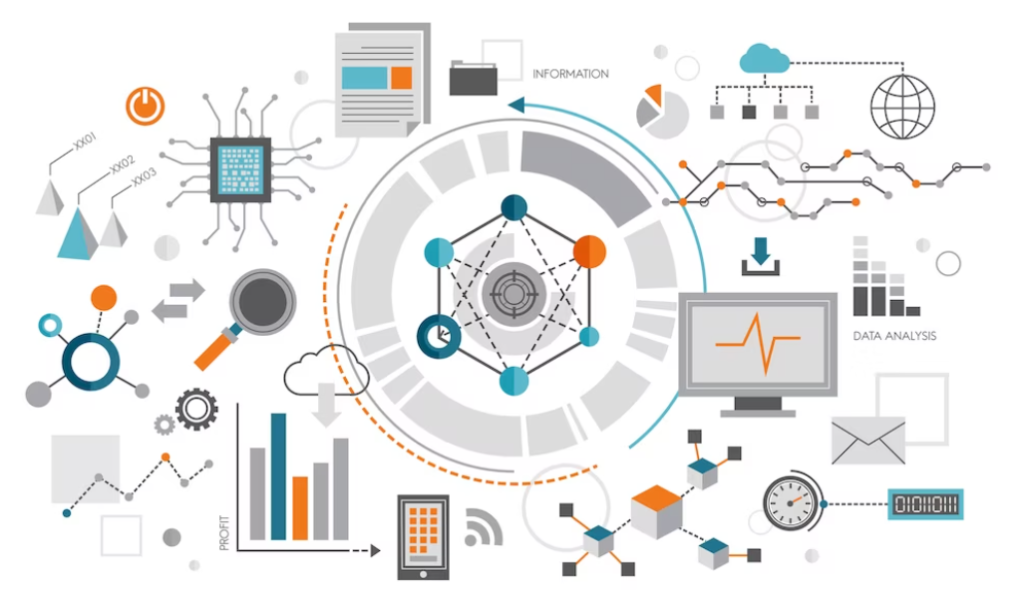Seamless System Integration for Legacy Systems and Data
In today’s world, organizations rely heavily on technology to run their business operations. The use of various software applications has become a norm, and organizations often face the challenge of integrating their legacy systems with new ones. In this article, we will discuss seamless legacy system modernization and system integration for legacy systems and data, and how it can benefit organizations.
Legacy Systems
Legacy systems refer to software applications that were developed in the past and are still being used by organizations. These systems may have been developed on older technologies or platforms that are no longer supported, making it difficult to integrate them with any new technologies or systems. Legacy systems are often seen as a hindrance to innovation and progress in organizations, as they are unable to keep up with the changing technology landscape.
However, completely replacing legacy systems is not always an option for organizations. This is because these systems may contain critical data that is necessary for the day-to-day operations of the organization. Moreover, replacing these data warehouses and systems can be a costly and time-consuming process. Therefore, organizations need to find ways to integrate their legacy systems with new ones to ensure smooth business operations.

System Integration
System integration refers to the process of connecting different software applications to ensure that they can work together seamlessly. This can involve connecting systems within an organization or connecting systems between different organizations. The aim of system integration is to ensure that data can flow between different systems, and that information can be shared across different departments or organizations.
Legacy systems integration can be a complex process, as these systems were not designed with integration in mind. However, with the right approach, it is possible to seamlessly integrate these legacy software systems with new ones.
> Need consulting on how to integrate your system?
Data Integration
Data integration refers to the process of combining data from different data sources into a unified view. This can involve integrating data from different databases or integrating data from different software applications. The aim of data integration is to ensure that data is accurate, up-to-date, and can be easily accessed by authorized users.
Legacy systems often contain critical data that needs to be integrated with new systems. This can be a challenging task, as the data in legacy systems may be stored in different formats or may not be structured in a way that can be easily integrated with data repository new systems. However, with the right approach, it is possible to integrate data from legacy systems with new ones.

API Integration
API integration refers to the process of connecting different software applications using Application Programming Interfaces (APIs). APIs allow software applications to communicate with each other and exchange data. APIs can be used to integrate a legacy application and systems with new ones, as well as to integrate different software applications within an organization.
API integration can be a powerful tool for legacy systems integration. APIs can be used to extract data from legacy systems and transfer it to new systems, or to connect legacy systems with new ones. APIs can also be used to ensure that data point to point, is synchronized between different systems, ensuring that the data is accurate and up-to-date.
Benefits of Seamless System Integration
Seamless system integration for legacy systems and data can provide a range of benefits for organizations. These include:
Improved Efficiency: Seamless system integration can improve the efficiency of business operations by ensuring that data is accurate, up-to-date, and easily accessible. This can reduce the time and effort required to get data warehouse perform tasks, allowing employees to focus on more important tasks.
Cost Savings: Integrating legacy systems with new ones can be a cost-effective solution, as it can reduce the need for expensive software development or replacement of legacy computer systems.
Increased Agility: Seamless system integration can increase the agility of an organization, allowing it to respond quickly to changing business requirements. This can improve the organization’s ability to compete in the marketplace.
Improved Customer Experience: Seamless system integration can improve the customer experience by ensuring that data is accurate and up-to-date, allowing organizations to provide timely and relevant services to their customers. This can improve customer satisfaction and loyalty.
Enhanced Security: Seamless system integration multiple data sources can enhance security by ensuring that data is protected and that access to it is controlled. This can help organizations to comply with data protection regulations and to prevent data breaches.

Best Practices for Seamless System Integration
Seamless system integration requires a strategic approach and careful planning to ensure success. Here are some best practices that organizations can follow for seamless system integration:
Define Integration Requirements: Organizations should define their integration requirements, including the systems to be integrated, the data to be exchanged, and the business processes to be supported.
Develop Integration Architecture: Organizations should develop an integration architecture that outlines how different systems will be connected and how data will flow between them.
Select Integration Tools: Organizations should select integration tools that are compatible with their systems and that can support their integration requirements. This can include API management tools, data integration tools, and middleware integration platform.
Establish Data Standards: Organizations should establish data standards that ensure that data is structured in a consistent way across different systems. This can facilitate data integration and ensure data accuracy.
Test and Validate: Organizations should test and validate their data integration tool or solution to ensure that it meets their integration requirements and that data is accurate and up-to-date.

How to Integrate Legacy Systems and Modern Software?
In today’s digital age, businesses are relying heavily on technology and modern applications to run their operations. However, many organizations still use legacy systems that are outdated and incompatible with modern software. Integrating legacy systems with modern software is crucial for businesses to remain competitive and efficient. In this article, we will explore the steps involved in integrating legacy systems with modern software.
Step 1: Define Integration Requirements
The first step in integrating legacy systems with modern software is to define integration requirements. This involves identifying the systems to be integrated, the data to be exchanged, and the business processes to be supported. It is important to involve stakeholders from different departments in this process to ensure that all integration requirements are identified.
Step 2: Develop Integration Architecture
Once integration requirements have been defined, the next step is to develop an integration architecture. This involves outlining how different systems will be connected and how data will flow between them. The integration architecture should take into account the existing systems and infrastructure of the organization.
Step 3: Select Integration Tools
Selecting the right integration tools is critical for successful integration of legacy systems with modern software. There are several tools available for different types of integration, including API management tools, big data integration tools, and middleware. It is important to select tools that are compatible with the existing systems and that can support the integration requirements.
Step 4: Establish Data Standards
Establishing data standards is important for ensuring that data is structured in a consistent way across different systems. This can facilitate data integration and ensure data accuracy. It is important to involve stakeholders from different departments in establishing data standards to ensure that they are appropriate for the business processes.
Step 5: Test and Validate
Testing and validating the integration solution is crucial to ensure that it meets the integration requirements and that data is accurate and up-to-date. This involves testing different data sets and scenarios to ensure that data flows seamlessly between different systems.
Learn How AI help in businesses? Unlocking Business Potential with AI, GPT-3, ChatGPT and Chatbot Development
Conclusion
Seamless system integration for legacy systems and data is a critical process for organizations that rely on technology to run their business operations. It can improve efficiency, reduce costs, increase agility, enhance customer experience, and improve security. However, successful legacy system integration requires a strategic approach, careful planning, and the use of best practices. By following these best practices, organizations can ensure that their integration solution is effective, efficient, and meets their integration requirements.
Ready to streamline your business operations by integrating your legacy systems with modern software? Contact us today to speak with one of our experts and get started. We’ll work with you to understand your unique needs and develop a tailored integration solution that meets your goals. Don’t let legacy systems hold your business back – Contact us now to take the first step towards a more efficient future.
